I hope to add another volcanic region to my world trips. Perhaps this time to San Salvador and the famous Santa Ana volcano and park!
These are the volcanoes and volcanic areas I have visited since 2000.
|
|
-
Gellert Thermal Baths - Hungary - 2000
-
Kilauea Volcano - Hawaii - 2002
-
Volcan Atitlan - Guatemala - 2004
-
Pamukkale Terraces - Turkey - 2004
-
Arenal Volcano - Costa Rico - 2005
-
Mount St. Helen - Washington State - 2007
-
Geysers - Sonoma California - 2007
-
Crater Lake - Oregon - 2007
-
Masaya Volcano - Nicaragua - 2008
-
Yellowstone Caldera - Wyoming - 2010
-
Wai-o-Tapu Thermals - New Zealand - 2013
-
Craters of the Moon - Idaho - 2014
-
Mt. Shasta - California - 2019
-
Caldera - Santorini - 2021
-
Sete Cidades - Azore Islands Portugal - 2022
Possible Future Trip to San Salvador
- Santa Ana Volcano - San Salvador - 202x
|
Itinerary
A possible itinerary to visit El Salvador.
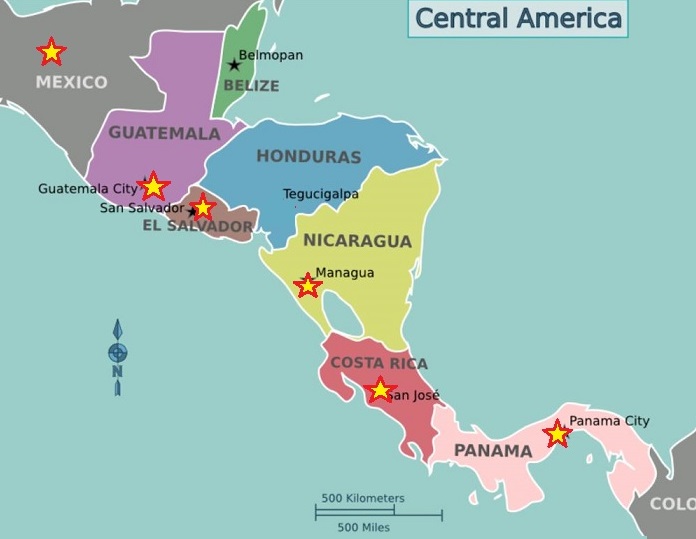
- Airline to San Salvador - Avianca airlines
- Hotel - Hyatt Centric San Salvador
- Tour of City
- La Laguna Botanical Garden
- La Pinacoteca Gallery
- Mercado Nacional de Artesanias
- Metrocentro Military History Museum
- Monumento al Salvador del Mundo Multiplaza
- Museo de Arte de El Salvador
- National Museum of Anthropology
- Theater Natural History Museum
- Tour National Parks
- Tour of Volcano - Masaya Volcano
- Airline to San Francisco - Avianca airlines
Airlines to El Salvador
One of the cheaper flights to San Salvador, supposedly non stop!

Countries I Have Visited In Cental and South America
As you can see, I have had birthdays all over the world. Why not have one in El Salvador! I have been in Nicaragua, Quatemala, Costa Rica, Panama and Mexico in Central America! Might as well make it six countries in Central America with El Salvador. In South America I have also been to six countries, Colombia, Peru, Chile, Argentina, Uruguay and Brazil!
|
Central America
- Nicaragua
- Quatamala
- Costa Rica
- Panana
- Mexico
- El Salvador
|
|
History of the El Salvador Flag
The flag of El Salvador features a horizontal triband of cobalt blue-white-cobalt blue, with the coat of arms centered and entirely contained within the central
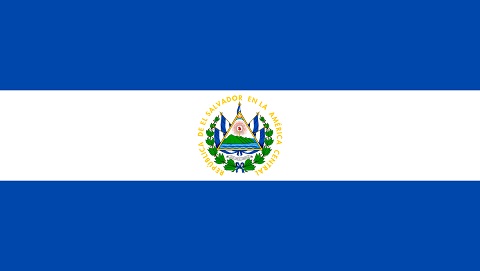 white stripe. This design of a triband of blue-white-blue is commonly used among Central American countries. El Salvador's flag is one of few that currently use the color purple, due to the rainbow in its coat of arms.
white stripe. This design of a triband of blue-white-blue is commonly used among Central American countries. El Salvador's flag is one of few that currently use the color purple, due to the rainbow in its coat of arms.
- Cobalt blue: represents the sky of the country and two massive oceans of Central America.
- White: represents peace, concordia and solidarity with the world
- Golden Amber: represents the entire bold phraseology in the flag, the coat of arms of El Salvador; the bold equilateral triangle, 5 indigenous spears, beaming solar rays, scroll, the bold motto (God Union Liberty) and the bold etymology (Republic of El Salvador in Central America)
The flag has the words (REPÚBLICA DE EL SALVADOR EN LA AMÉRICA CENTRAL) in a bold and Heavy, Sans Serif Boris Black Bloxx typeface, in a golden amber color
The national motto (DIOS UNIÓN LIBERTAD) in Trajan bold Roman square capitals. The letter are colored amber gold on the civil flag, and black in the coat of arms
The date (15 DE SEPTIEMBRE DE 1821) in Trajan bold Roman square capitals
The blue hue is a vivid, lustrous and luscious rich solid cobalt blue. In the center of and occupying the entire width of the white stripe is the coat of arms with its top touching the upper blue strip and its base touching the lower blue stripe. The coat of arms contains the in bold golden amber words "REPÚBLICA DE EL SALVADOR EN LA AMÉRICA CENTRAL" (English: Republic of El Salvador in Central America). There are two variant flags, one without the coat of arms, and the other with the words "DIOS UNIÓN LIBERTAD" (English: God, Union, Liberty) in bold golden amber in place of the coat of arms. All three contain the same cobalt blue and white stripes, occasionally with a gold Fringe (trim). The main flag has an aspect ratio of 189:335 while the variants are both 3:5.
Overview of El Salvador
El Salvador, meaning ("The Saviour"), officially the Republic of El Salvador (Spanish: República de El Salvador), is a country in Central America. It is bordered on the northeast by Honduras, on the northwest by Guatemala, and on the south by the Pacific Ocean. El Salvador's capital and largest city is San Salvador. The country's population in 2023 was estimated to be 6.5 million.
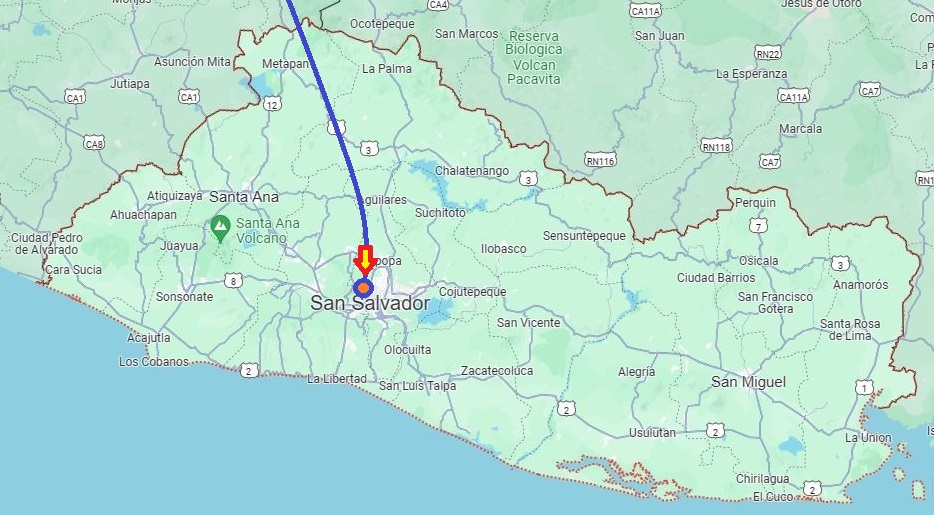
Among the Mesoamerican nations that historically controlled the region are the Lenca (after 600 AD), the Mayans, and then the Cuzcatlecs. Archaeological monuments also suggest an early Olmec presence around the first millennium BC. In the beginning of the 16th century, the Spanish Empire conquered the Central American territory, incorporating it into the Viceroyalty of New Spain ruled from Mexico City. However the Viceroyalty of New Spain had little to no influence in the daily affairs of the isthmus, which was colonized in 1524. In 1609, the area was declared the Captaincy General of Guatemala by the Spanish, which included the territory that would become El Salvador until its independence from Spain in 1821. It was forcibly incorporated into the First Mexican Empire, then seceded, joining the Federal Republic of Central America in 1823. When the federation dissolved in 1841, El Salvador became a sovereign state, then formed a short-lived union with Honduras and Nicaragua called the Greater Republic of Central America, which lasted from 1895 to 1898.
From the late 19th to the mid-20th century, El Salvador endured chronic political and economic instability characterized by coups, revolts, and a succession of authoritarian rulers. Persistent socioeconomic inequality and civil unrest culminated in the Salvadoran Civil War from 1979 to 1992, fought between the military-led government backed by the United States, and a coalition of left-wing guerrilla groups. The conflict ended with the Chapultepec Peace Accords. This negotiated settlement established a multiparty constitutional republic, which remains in place to this day. During the civil war and afterwards, large numbers of Salvadorans emigrated to the United States. From 1980 through 2008, nearly one million Salvadorans immigrated to the United States, such that by 2008, they were the sixth largest immigrant group in the US.
El Salvador's economy has historically been dominated by agriculture, beginning with the Spanish taking control of the indigenous cacao crop in the 16th century, with production centered in Izalco, along with balsam from the ranges of La Libertad and Ahuachapán. This was followed by a boom in use of the indigo plant in the 19th century, mainly for its use as a dye. Thereafter the focus shifted to coffee, which by the early 20th century accounted for 90% of export earnings. El Salvador has since reduced its dependence on coffee and embarked on diversifying its economy by opening up trade and financial links and expanding the manufacturing sector. The colón, the currency of El Salvador since 1892, was replaced by the United States dollar in 2001. El Salvador ranks 124th among 189 countries in the Human Development Index. As of 2019 economic improvements had led to El Salvador experiencing the lowest level of income inequality among nearby countries. Among 77 countries included in a 2021 study, El Salvador had one of the least complex economies for doing business.
Overview of San Salvador
San Salvador is the capital and the largest city of El Salvador and its eponymous department. It is the country's political, cultural, educational and financial center. The Municipality of San Salvador has 209,633 inhabitants (2020). The Metropolitan Area of San Salvador, which comprises the capital itself and 13 of its municipalities, has a population of 2,404,097. The urban area of San Salvador has a population of 1,600,000 inhabitants.
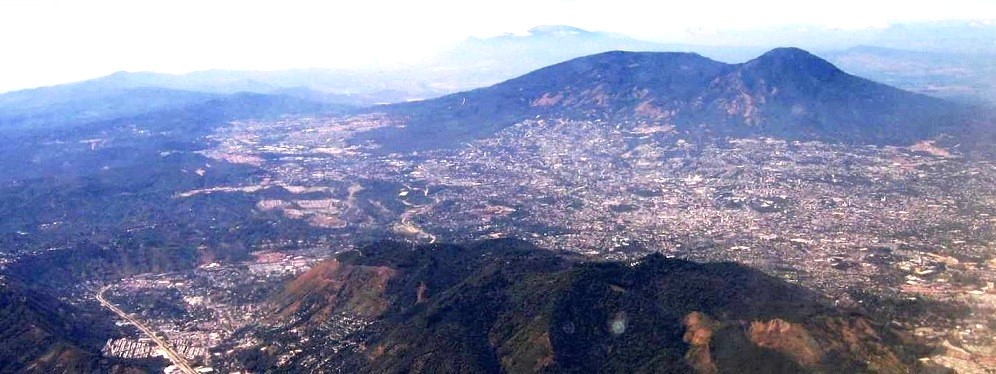
The city is home to the Consejo de Ministros de El Salvador (Council of Ministries of El Salvador), the Legislative Assembly of El Salvador, the Supreme Court of El Salvador, and other governmental institutions, as well as the official residence of the President of El Salvador. San Salvador is located in the Salvadoran highlands, surrounded by volcanoes and prone to earthquakes. The city is also home to the Roman Catholic Archdiocese of San Salvador, as well as many Protestant branches of Christianity, including Evangelicals, Baptists, and Pentecostals, and the restorationist Christian sect the Church of Jesus Christ of Latter-day Saints.
San Salvador has been the host city for regional and international sporting, political, and social events. It hosted the Central American and Caribbean Games in 1935, 2002, and in 2023 and the Central American Games in 1977 and 1994, as well as the Miss Universe pageant in 1975 and in 2023. San Salvador was also the host city of the 18th Ibero-American Summit in 2008, the most important sociopolitical event in the Spanish and Portuguese sphere. The Central American Integration System has its headquarters in San Salvador.
San Salvador Weather - Temperature
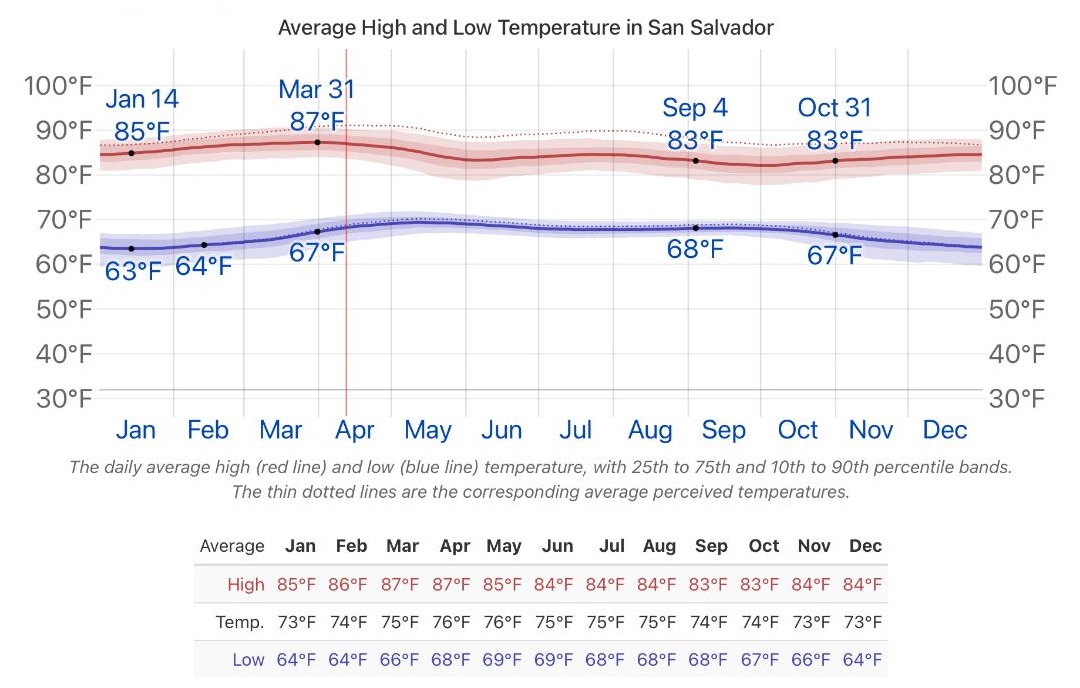
San Salvador Weather - Precipitation
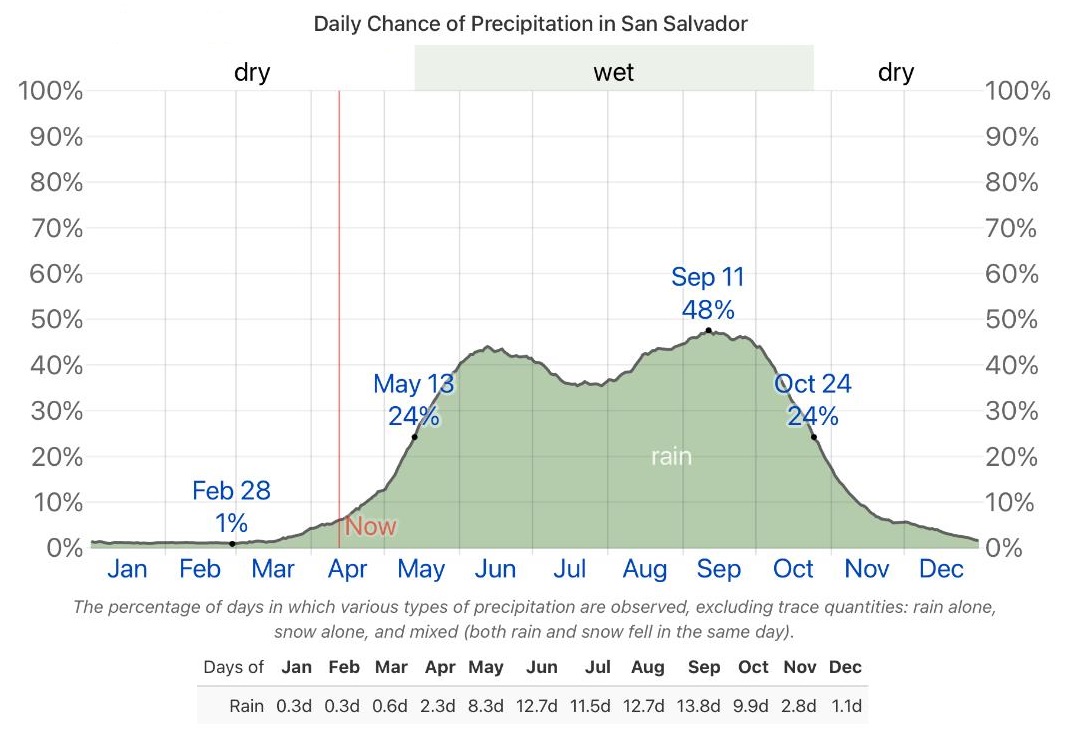
San Salvador Photos

xxx |

xxx |

xxx |

xxx |
Created
on 2021.11.04
 Updated on
2025.01.12
Updated on
2025.01.12
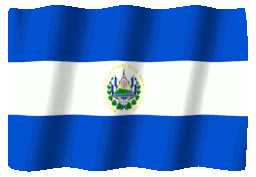







 white stripe. This design of a triband of blue-white-blue is commonly used among Central American countries. El Salvador's flag is one of few that currently use the color purple, due to the rainbow in its coat of arms.
white stripe. This design of a triband of blue-white-blue is commonly used among Central American countries. El Salvador's flag is one of few that currently use the color purple, due to the rainbow in its coat of arms.






 Updated on
2025.01.12
Updated on
2025.01.12